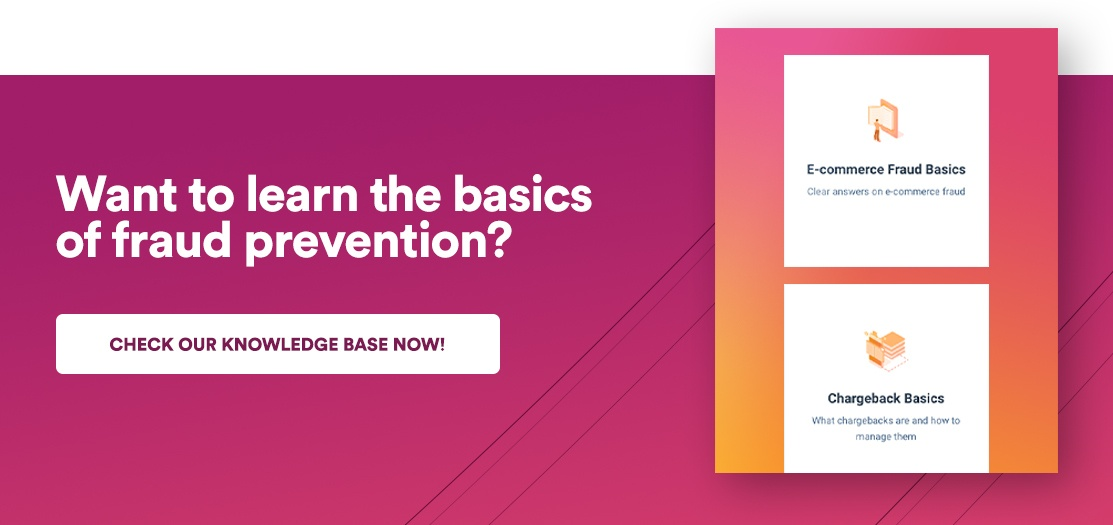Free Fraud Prevention Tools in Ecommerce Platforms May Be Costing You
Fraud prevention may not be your first thought when evaluating an ecommerce platform, but many merchants find that the fraud prevention offered by their platform can make—or break—their success. If you’re relying on the standard fraud prevention tools in your ecommerce platform or payment gateway to protect your business and your customers, you may want to think again.
Merchants want an ecommerce partner that offers customers a smooth, hassle-free experience. There is a common belief among online merchants, even at the enterprise level, that standard fraud prevention tools that come bundled with ecommerce platforms and payment gateways are adequate. They are comforted knowing there are filters to weed out high-risk orders.
But here’s the catch: high risk orders are not necessarily fraudulent orders, and those protective filters could be increasing the likelihood of false declines.
Image showing cost

The Changing Face of Online Shopping and Fraud
The pandemic has changed the profile of the online buyer from even a year ago. More people are buying online, more people are buying more things online and more people are buying for other people online. In March it was reported that while online sales are expected to exceed $630 billion this year, fraudsters will steal more than $12 billion.
So, what hasn’t changed in fraud prevention? The built-in tools and fraud filters most ecommerce platforms and payment gateways provide. They simply haven’t kept pace with the changes in the marketplace and the evolving threats from fraud.
The Challenges with Using Fraud Filters
Filters are a broad brush, not dynamic. If you give a filter certain criteria, it will decline orders that meet those criteria … and will inevitably decline good orders. Indeed, LexisNexis revealed that “approximately 24% of declined transactions turn out to be false positives.”
How does this happen? As it turns out, because filters paint such a broad brush, there’s no room for nuance or unusual shopping circumstances, such as travel or gift-giving.
Here's a typical scenario: purchasing two items from an online store and paying with the same credit card.
- The customer processes separate transactions because the items are being shipped to two different addresses.
- The first sale goes through, but the second is declined.
- Both transactions are valid, but the second was rejected by a broadly defined filter that detected the change in shipping address as fraudulent activity.

Additionally, when it comes to fraud filters, more is not better. Many merchants will layer their fraud rules in an attempt to catch more sophisticated fraudsters. However, depending on the order in which these filters are applied, they could cancel each other out – or turn down a large volume of legitimate transactions.
There’s good reason for online merchants to worry about such false declines. First, there is the loss of revenue from the initial declined transaction. Second, according to a recent ClearSale/Sapio Research survey, 39% of respondents say if a merchant declines their payment, they will never place an order with that merchant again. And 28% would go to social media to express their displeasure. This compounds the lost revenue from one transaction with the opportunity cost of that customer’s value over a lifetime.
Another factor: the lost value of anybody that disgruntled customer influences. Roughly 82% of Americans consult online ratings and reviews when buying something for the first time. If they see that angry customer’s social media posts, they may decide to never even give that merchant a try.
When looked at that way, it doesn’t make sense to rely on the broad filters or fraud management tools included in ecommerce platforms or in payment gateways when more finely tuned and effective options are available.

To avoid dooming all these transactions to false declines, either the filter criteria needs to be adjusted, or more transactions need to be flagged to manual review.

Back to Manual Review?
Image showing a (human) fraud analyst
While it may feel safer to have a human pair of eyes looking at flagged transactions, relying on in-house manual review can quickly become unsustainable for a high-volume merchant. Experian estimates that nearly 30% of all online orders could be subject to review.
Successful ecommerce merchants know their strengths, and few would say they are fraud prevention experts. With the right training and tools, it’s conceivable to have a team of customer service representatives reviewing every order that doesn't initially pass the smell test.
But is that the best use of your team’s time and can they do so quickly enough to avoid inconveniencing the customer?
This a problem ClearSale was created to solve. A good anti-fraud service should include a thorough risk management system that ensures high rates of approved sales with few or no chargebacks — all in as short a response time as possible.
We’re constantly on the job, monitoring and identifying attack patterns to prevent fraudsters from placing orders and applying the lessons learned to hundreds of other transactions. All orders go through ClearSale’s platform and are scored by a segment-customized fraud score and fraud rules and are then cross-referenced with different data sources.
In those rare occasions when human eyes are the best option, our high-tech manual review process ensures transactions are never incorrectly denied outright, and no revenue is neglected without reason.
 David Fletcher
David Fletcher
